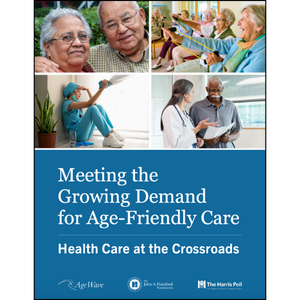Long-term services and supports: Report ranks states
Widespread disparities exist across the country in terms of long-term services and supports (LTSS) offered by states and the District of Columbia, finds a new report issued by the AARP, the Commonwealth Fund and the SCAN Foundation. The research examines nursing homes and other residential services, home care services, and supports for family caregivers, updating a 2011 effort.
“This scorecard shows that all states have work to do on improving their systems of care, including assessing people’s needs in a uniform way, helping people transition back home after a medical intervention and increasing the affordability of services regardless of who pays,” says Bruce Chernof, president and CEO of the SCAN Foundation. “As recognized by last year’s federal Commission on Long-Term Care, the responsibility for realizing these kinds of improvements means greater action by both state and federal leaders.”
The report, titled “Raising Expectations: A State Scorecard on Long-Term Services and Supports for Older Adults, People with Physical Disabilities and Family Caregivers,” evaluates 26 indicators in five dimensions that make up the LTSS system in each state/district. The dimensions include affordability and access, choice of setting and provider, quality of life and quality of care, support for family caregivers, and effective transitions. New indicators this year include length of stay in nursing homes and use of anti-psychotic drugs by nursing homes.
The highest-ranked states/districts, considered by report authors to offer the best LTSS:
- Minnesota (#1),
- Washington,
- Oregon,
- Colorado and
- Alaska.
The lowest-ranked states/districts:
- Indiana,
- Tennessee,
- Mississippi,
- Alabama and
- Kentucky (#51).
Top-ranked states use nursing homes less and minimize transitions between care settings, according to report authors. The leading states also have implemented laws and policies that are thought to strengthen Medicaid programs and support family caregivers, according to report authors. These laws include paid sick leave, nurse delegation of health maintenance tasks and devotion of more Medicaid dollars to home- and community-based services (HCBS).
The single strongest predictor of overall LTSS system performance is the reach of a state’s Medicaid LTSS safety net, report authors said. Twenty-four states have increased the percentage of Medicaid LTSS dollars that support HCBS in recent years, but widespread disparity exists across the states. For instance, the five top-ranked states dedicate 62.5 percent of Medicaid LTSS dollars to HCBS, whereas the lowest-ranking five devote 16.7 percent.
I Advance Senior Care is the industry-leading source for practical, in-depth, business-building, and resident care information for owners, executives, administrators, and directors of nursing at assisted living communities, skilled nursing facilities, post-acute facilities, and continuing care retirement communities. The I Advance Senior Care editorial team and industry experts provide market analysis, strategic direction, policy commentary, clinical best-practices, business management, and technology breakthroughs.
I Advance Senior Care is part of the Institute for the Advancement of Senior Care and published by Plain-English Health Care.
Related Articles
Topics: Executive Leadership , Medicare/Medicaid










